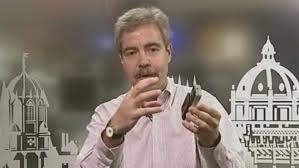Electronics such as phones and laptops may start shedding their power cords
within a year.
That's the prediction of Eric Giler, CEO of WiTricity, a company that's able
to power light bulbs using wireless electricity that travels several feet from
a power socket.
WiTricity's version of wireless electricity -- which converts power into a
magnetic field and sends it sailing through the air at a particular frequency
-- still needs to be refined a bit, he said, but should be commercially
available soon.
 |
| Eric Giler |
Giler, whose company is a spinoff of a Massachusetts Institute of Technology
research group, says wireless electricity has the potential to cut the need for
power cords and throw-away batteries.
"Five years from now, this will seem completely normal," he said.
"The biggest effect of wireless power is attacking that huge energy
wasting that goes on where people buy disposable batteries," he said.
Watch Giler demonstrate the idea
It also will make electric cars more attractive to consumers, he said,
because they will be able to power up their vehicles simply by driving into a
garage that's fitted with a wireless power mat.
Electric cars are "absolutely gorgeous," he added, "but does
anyone really want to plug them in?"
Ideas about wireless electricity have been floating around the world of
technology for more than a century. Nikola Tesla started toying with the
ability to send electricity through the air in the 1890s. Since then, though,
making wireless electricity technology safe and cheap enough to put on the
market has been an arduous task for researchers.
Engineers have developed several ways to convert electricity into something
that's safe to send through the air without a wire. Some of their technologies
are available on commercial scales, but they have some limits.




